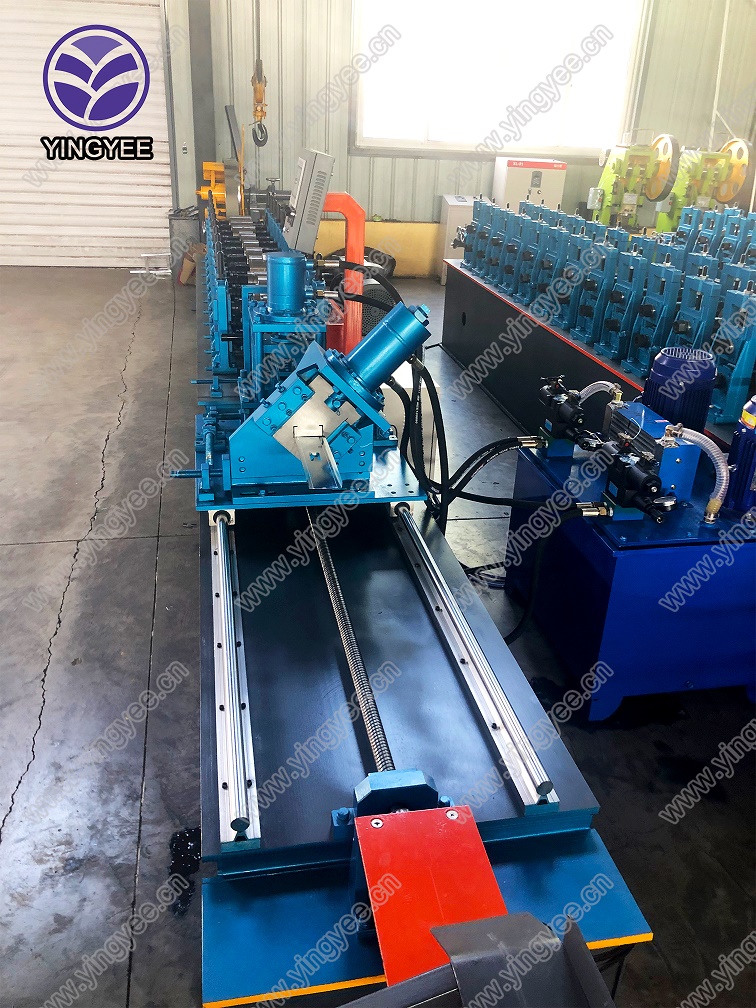
C-Shaped Steel Purlin Roll Forming Machine An Overview
In the modern construction industry, the use of efficient and versatile materials is paramount. One such crucial component is the C-shaped steel purlin, which plays a significant role in providing structural support for roofs and walls. To meet the growing demand for these essential components, C-shaped steel purlin roll forming machines have become an integral part of the manufacturing process. This article explores the significance of these machines, their operational mechanisms, and the benefits they offer.
Understanding C-Shaped Steel Purlins
C-shaped steel purlins are structural elements typically used in metal buildings and frameworks. Known for their durability and strength, these steel components are designed to support various roofing and cladding systems. Their C-shaped cross-section allows for efficient load distribution, making them a preferred choice in construction projects. These purlins can be used in various applications, including industrial buildings, warehouses, and commercial establishments.
The Roll Forming Process
The roll forming process is a continuous bending operation in which a long strip of metal, usually coiled steel, is gradually shaped into the desired C-profile through a series of precision rollers. The C-shaped steel purlin roll forming machine automates this process, significantly enhancing production efficiency and consistency.
1. Material Feeding The cold-rolled steel coil is fed into the machine, where it is straightened and trimmed to the required width.
2. Roll Configuration As the strip progresses through the machine, it passes through a series of rollers that progressively shape it into the C-profile. Each set of rollers is specifically designed to perform a particular bending operation, ensuring precision and uniformity.
3. Cutting and Finishing Once the desired length of the C-shaped purlin is achieved, the machine automatically cuts the purlin to specified lengths. Additional finishing operations such as punching holes for screws and coatings for corrosion resistance can also be integrated into the production line.

Advantages of C-Shaped Steel Purlin Roll Forming Machines
1. High Efficiency One of the most significant advantages of using roll forming machines is their ability to produce large quantities of C-shaped purlins in a relatively short amount of time. The automated nature of the process reduces labor costs and increases output.
2. Precision and Consistency Roll forming machines ensure that each purlin produced meets strict dimensional tolerances. This level of precision is crucial for structural integrity in construction applications.
3. Versatility Modern C-shaped steel purlin roll forming machines can be adjusted to produce various sizes and specifications of purlins, allowing manufacturers to cater to diverse customer needs. This flexibility enhances market competitiveness.
4. Cost-Effectiveness By reducing material wastage and labor costs, these machines provide a cost-effective solution for manufacturers. The longevity and durability of the products also add to overall savings in construction projects.
5. Sustainability C-shaped steel purlins are recyclable, and the use of automated roll forming processes minimizes waste, contributing to more sustainable manufacturing practices.
Conclusion
C-shaped steel purlin roll forming machines are a cornerstone of modern construction material manufacturing. Their ability to produce high-quality, precise, and durable steel purlins efficiently makes them invaluable to the construction industry. As the demand for robust and sustainable building materials continues to rise, the role of these machines will only become more critical, driving innovation and efficiency in metal construction practices.